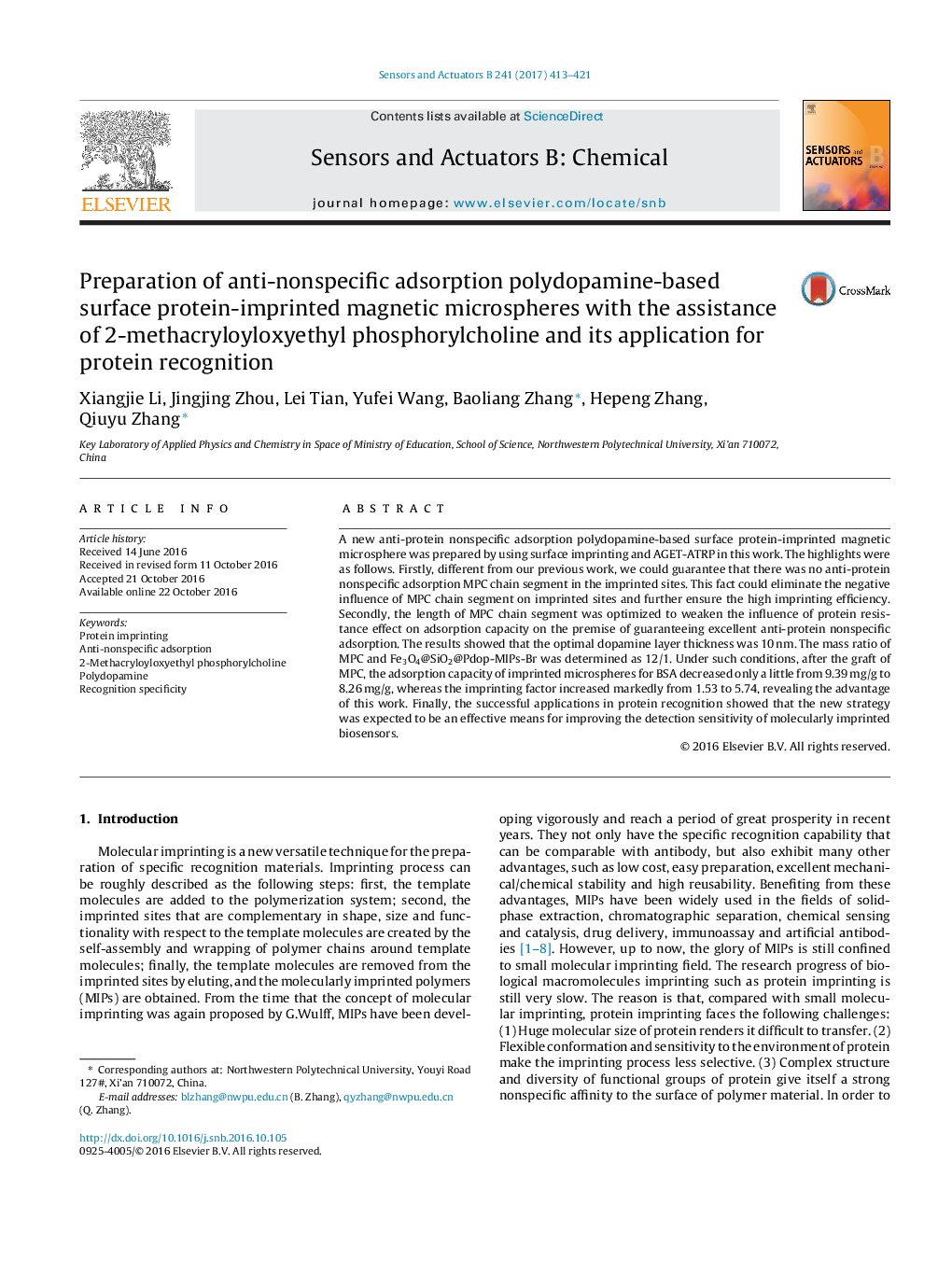| Article ID | Journal | Published Year | Pages | File Type |
|---|---|---|---|---|
| 5010110 | Sensors and Actuators B: Chemical | 2017 | 9 Pages |
Abstract
A new anti-protein nonspecific adsorption polydopamine-based surface protein-imprinted magnetic microsphere was prepared by using surface imprinting and AGET-ATRP in this work. The highlights were as follows. Firstly, different from our previous work, we could guarantee that there was no anti-protein nonspecific adsorption MPC chain segment in the imprinted sites. This fact could eliminate the negative influence of MPC chain segment on imprinted sites and further ensure the high imprinting efficiency. Secondly, the length of MPC chain segment was optimized to weaken the influence of protein resistance effect on adsorption capacity on the premise of guaranteeing excellent anti-protein nonspecific adsorption. The results showed that the optimal dopamine layer thickness was 10Â nm. The mass ratio of MPC and Fe3O4@SiO2@Pdop-MIPs-Br was determined as 12/1. Under such conditions, after the graft of MPC, the adsorption capacity of imprinted microspheres for BSA decreased only a little from 9.39Â mg/g to 8.26Â mg/g, whereas the imprinting factor increased markedly from 1.53 to 5.74, revealing the advantage of this work. Finally, the successful applications in protein recognition showed that the new strategy was expected to be an effective means for improving the detection sensitivity of molecularly imprinted biosensors.
Keywords
Related Topics
Physical Sciences and Engineering
Chemistry
Analytical Chemistry
Authors
Xiangjie Li, Jingjing Zhou, Lei Tian, Yufei Wang, Baoliang Zhang, Hepeng Zhang, Qiuyu Zhang,
